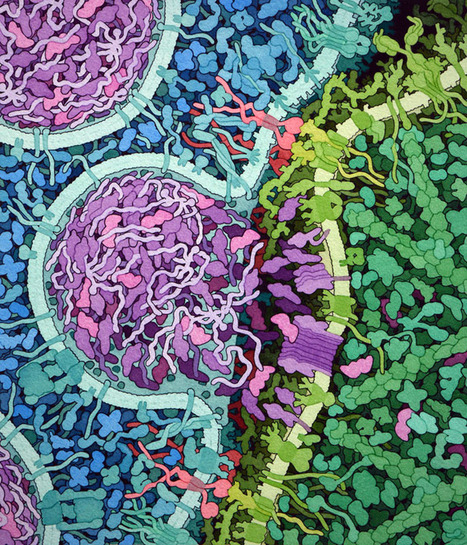Some bacteria store fuel molecules in granules of plastic. When starved of nutrients, these bacteria make a lot of this plastic, sometimes building granules 80 times heavier than their dry weight. This is perfect for the biotech industry, since it allows easy production of large amounts. Bacteria rely on the enzyme polyhydroxybutyrate synthase to construct the plastic chain from small hydroxybutyrate building blocks.
Credit: The RCSB PDB Molecule of the Month by David S. Goodsell (The Scripps Research Institute and the RCSB PDB) presents short accounts on selected molecules from the Protein Data Bank (NAR, 28, 2000, 235–242).



 Your new post is loading...
Your new post is loading...








